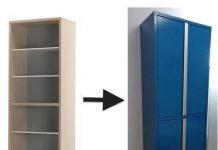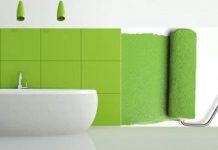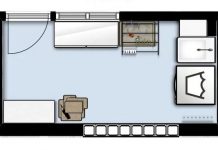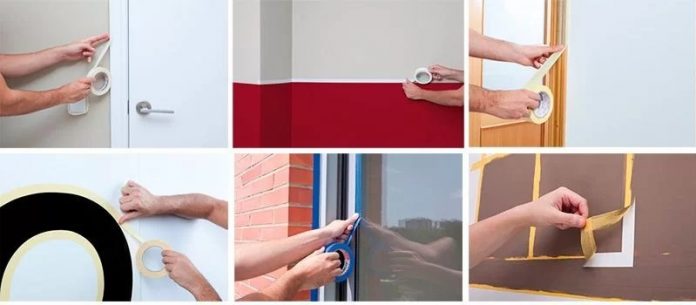
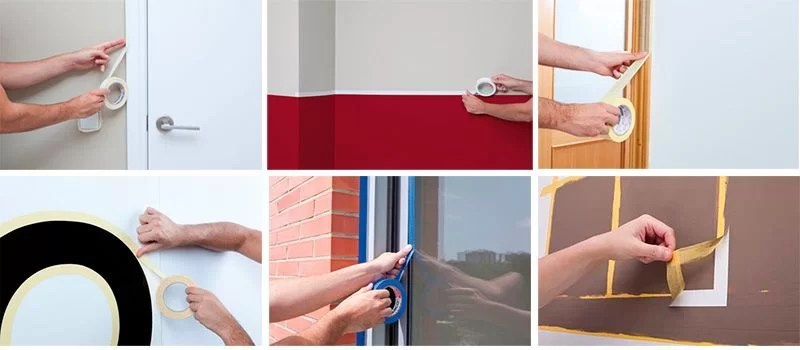
Masking tape, painter’s tape or bodybuilder’s tape is one of the most used accessories when painting but also the most unknown. With this post you will learn everything you should know about masking tape for painting and that you probably don’t know.
I have to admit that until recently the only difference I found between a painter’s tape and another was its thickness, however, not only are there different types depending on the use that is going to be given to it, but you can also get the most out of it match when it comes to painting if you put these tips and tricks into practice.
How to choose the most appropriate masking tape for painting
In the same way that the same paint is not usually used for interiors as for exteriors, or to paint a wall or an iron fence, there are different types of masking tape depending on what you are going to use it for.
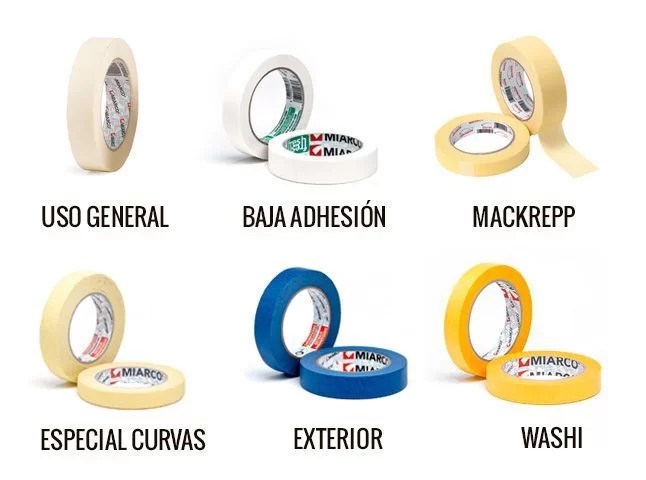
- krepp tape: It is made from paper and natural rubber adhesive. It is normally light yellow in color and is the tape that is usually used indoors to protect those surfaces that you do not want to paint.
- Low Adhesion or Fresh Krepp Tape: this tape differs from the previous one in that its adhesive is less sticky, so it is ideal when you want to paint a surface with several colors without running the risk of stripping the paint when removing the tape. In the same way, it is also the most suitable for placing on wallpaper. It is normally white.
- Mackrepp Tape: its adhesive is made of natural rubber and resists high temperatures (up to 80 ºC). It is used on surfaces that require greater resistance to temperature, in high decoration because it does not leave adhesive residue and is very easy to remove, and also in the automotive sector. Its color is yellow.
- Rough or special tape for curves: its adhesive is made of natural rubber and adapts to all kinds of curves, forming a perfect circle. It is recommended to mask curved or rounded surfaces, as well as figures, letters, numbers, etc.
- Krepp tape for exterior: its adhesive is acrylic and resists both the action of the sun and the rain, and can last several weeks outdoors. It is used above all on facades, window frames and doors facing the outside, as well as for long-term jobs or those that have direct exposure to the sun. You will distinguish it by its blue color.
- washi tape: It is made with rice paper and acrylic adhesive. It could be said that it is an “all-terrain” tape since it is very versatile and brings together the best properties of the rest of the tapes. It adapts well to curves and has a high resistance to UV rays, water and humidity, to high temperatures (withstands up to 150 ºC) and it also has low adhesion, so it is recommended for delicate surfaces, precision work and high decoration. Its color is orange.
clean before paste
If you want to ensure that the masking tape will not come off at the most inopportune moment (when you are painting, for example), clean the surface to which you want to adhere it with a cloth soaked in methylated spirit, in this way you will remove dust and traces of Cleaning products.
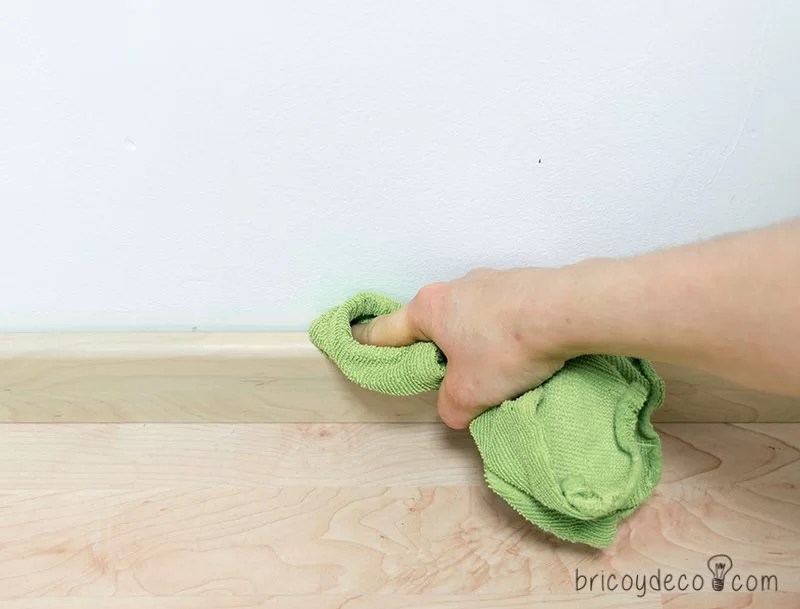
This trick will come in very handy before placing the tape on the baseboard, as this is where the most dust tends to accumulate.
Fix the tape correctly
When fixing the tape, help yourself with a spatula, in this way you will prevent paint from seeping under the tape (you can also consult this trick to make perfect lines with masking tape).
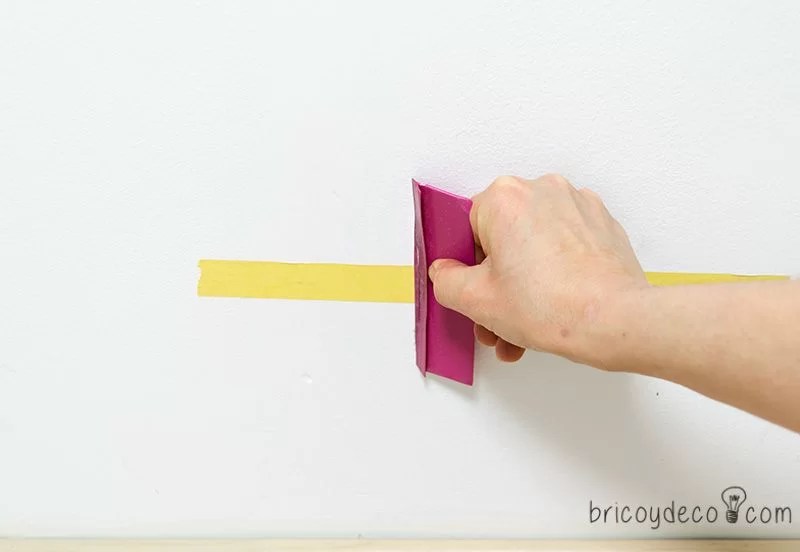
How to protect the ceiling when painting the wall
For these cases, the ideal is to use protective paper with incorporated painter’s tape. It is not advisable for the paper to be too large as it could bend and spoil the freshly painted wall, but wide enough so as not to stain the ceiling when we bring the roller closer (about 8 centimeters).
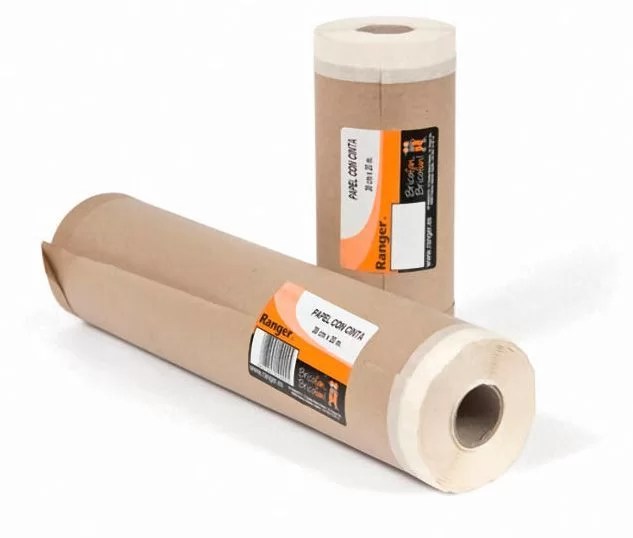
Image via Miarco
How to protect the wall when painting the ceiling
The best way to protect the walls when you want to paint the ceiling is by placing a plastic that covers them. To do this, you need masking tape about 3 centimeters wide, cut a strip and fold it in half, which is not adhesive. Next, it adheres to the joint between the wall and the ceiling and the protective plastic is glued on the other folded part.
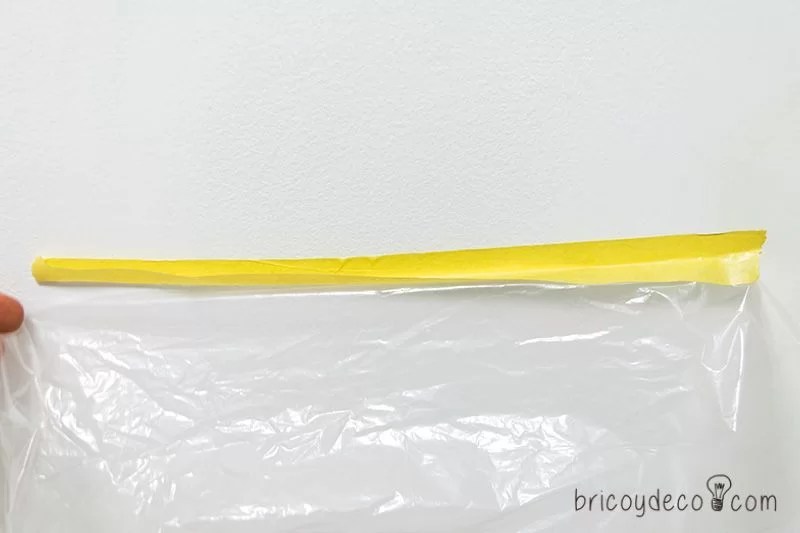
Image via Miarco
In this way the plastic will be adhered and can also be easily removed when the tape is removed from the ceiling.
How to put masking tape to paint over a corner
In order for the tape to fit perfectly in any corner, place a piece that sticks out a little and cut the excess part with a cutter.
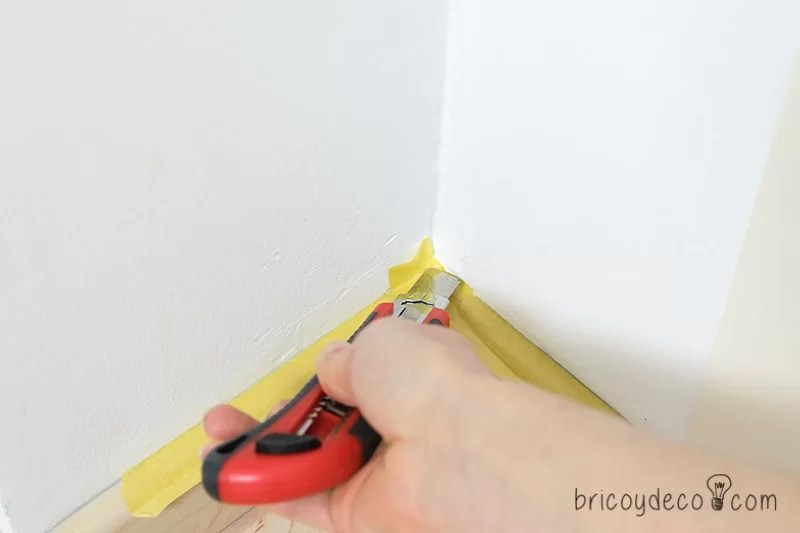
This trick will also be useful if you have to paint the frame and internal divisions of a window or door.
Trick to quickly place the masking tape to paint on the baseboard
A trick to place the painter’s tape on the baseboard quickly and accurately is to take off a section and support the roll against the wall. While with one hand you stick the tape, with the other you unroll it.
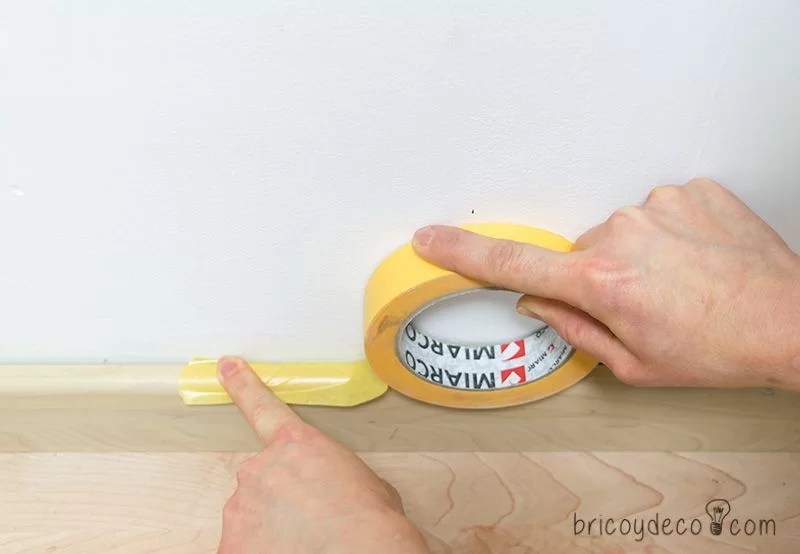
How to remove the tape without taking off the paint
It is recommended to remove the painter’s tape when the paint is still wet, but if it has dried, it is advisable to mark the edge of the tape with a putty knife before pulling it off. This will break the bond between the paint and the tape and it will come off cleanly.
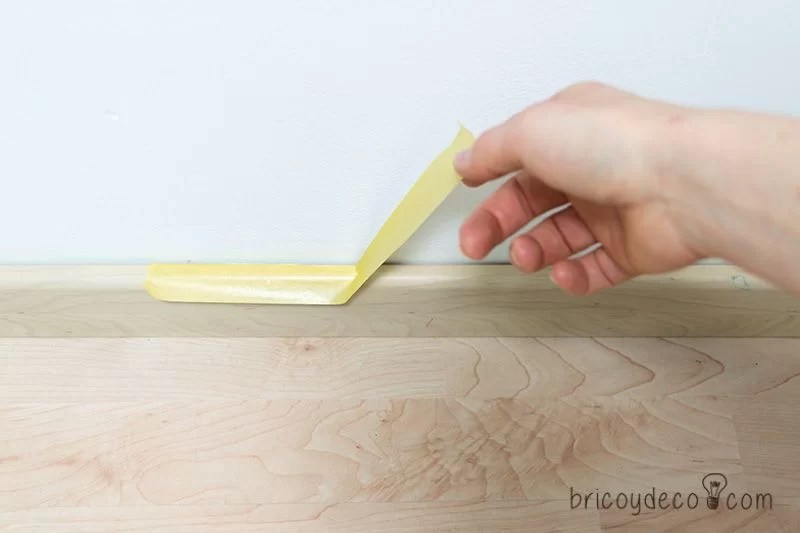
On the other hand, removing the tape at a 45 degree angle to the painted surface will reduce the risk of paint peeling off.
And not just to paint…
Bodybuilder tape will also be useful in these cases:
- Install decorative vinyl.
- Placing photos or a poster on the wall without damaging it. To do this, place a piece of masking tape and double-sided tape on it, so you can easily remove it without leaving any trace of adhesive.
- Remove lint from clothes.
- When you want to distribute the furniture in a room or the paintings on a wall. Adhere the tape on the floor or wall with the actual size of your furniture or paintings to better distribute the space.
- Line your eyes by placing a piece of tape at the corner of your eye.
Did you know the different types of masking tape for painting that exist? I hope that these tips and tricks will help you get more out of it and use the most appropriate one for your DIY projects.
If you liked this post you can find many more guides, tips and tricks at Thank you very much for commenting and sharing!

Cover image via Miarco

